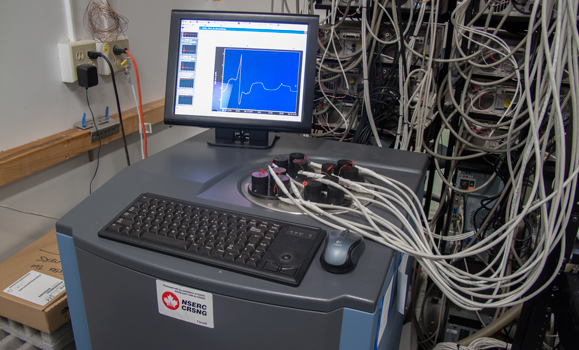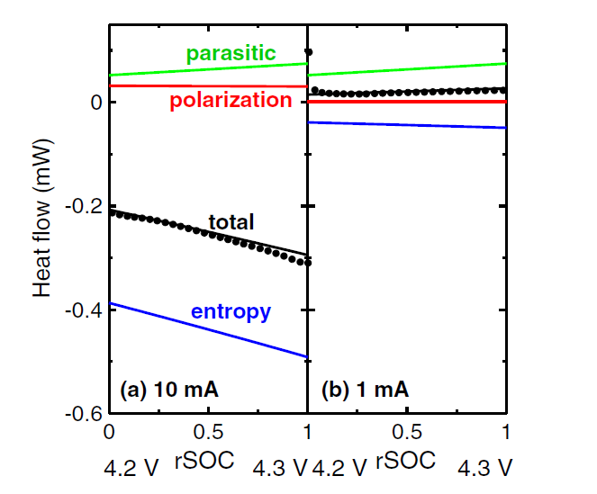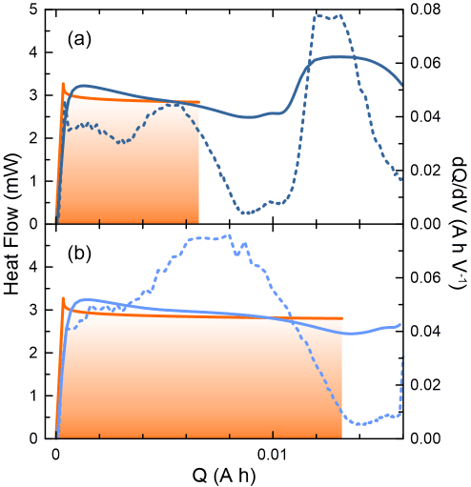Battery Microcalorimetry
When a Li-ion battery is charged or discharged, heat is generated from the electrodes and internal reactions in the cell1.╠² The TAM III isothermal calorimeter (TA Instruments), pictured below, measures the heat flow of a cell with an accuracy better than ┬▒ 1 ╬╝W.
This heat flow, combined with the simultaneously collected electrochemical data, can be used for a wide variety of applications, including:
ÔÇó Quantifying the energy produced from unwanted parasitic reactions between electrodes and electrolytes2,3
ÔÇó Studying the effect of electrolyte additives on electrode-electrolyte reactivity,
ÔÇó Combined with theoretical calculations to characterize solid electrolyte interphase products4

Figure 1 - TAM III Microcalorimeter
Figure 2 - Heat flow measurements can be modelled to extract the various components of the heat flow in a Li-ion cell.╠² The parasitic heat flow is the source of the eventual ÔÇ£deathÔÇØ of Li-ion cells. See references 1, 2 and 3 for more information.
Figure 3 - During the first cycle of a 0.220 Ah pouch cell 2% (a) and 4% (b) by weight of an electrolyte additive is reduced on the negative electrode. The measured heat flow (solid blue) is compared to a theoretical value (orange) calculated for a specific reaction scheme determined using quantum chemistry (see reference 4).
╠²
References:
- ╠²L.J. Krause, et al., J. Electrochem. Soc. 159, A937 (2012)
- ╠²Downie, L.E., et al., J. Electrochem. Soc. 161,╠²A1782, (2014)
- ╠²S. Glazier, et al., J. Electrochem. Soc. 163, A2131, (2016)
- ╠²Hall, D.S., et al., Phys. Chem. Chem. Phys. 18, 11383, (2016)


